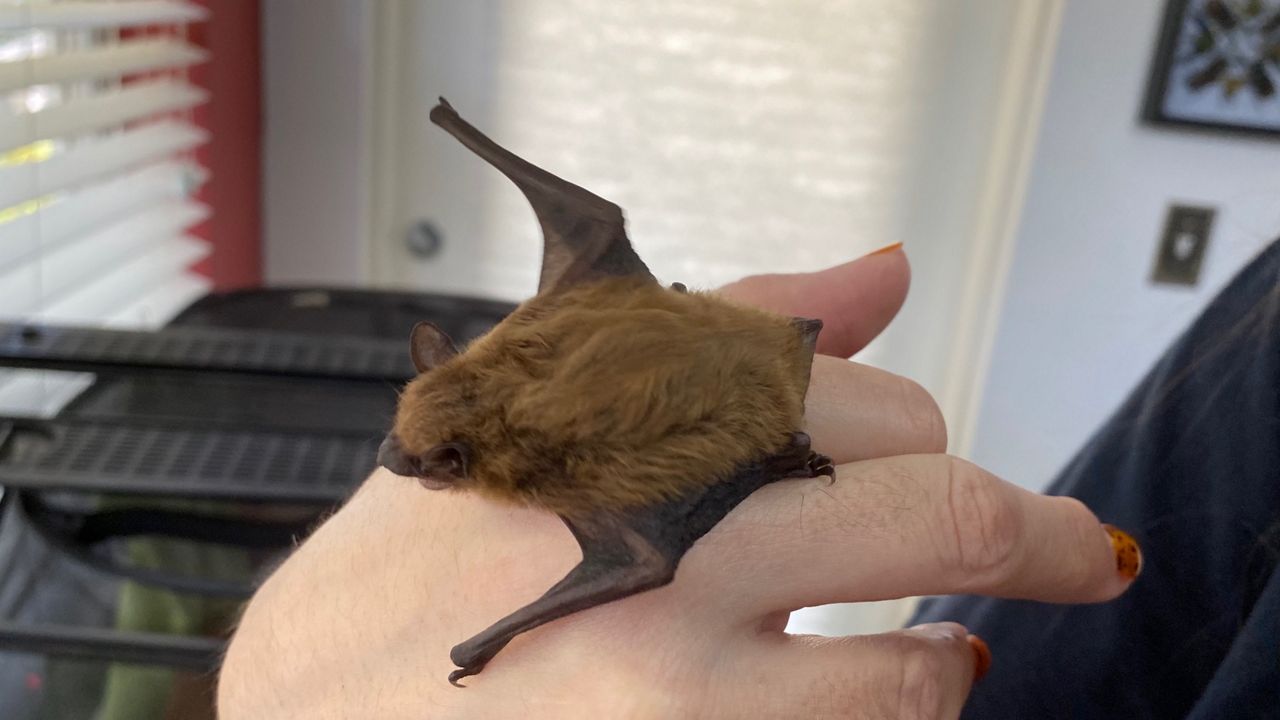ST. PETERSBURG, Fla. — Even before the pandemic, bats had a pretty bad image. They’re rabid. They’re evil. They (best Bela Lugosi voice) want to suck your blood.
The truth is, most bats aren’t rabid, eat only insects or fruit, and embody a critical link in the ecosystems in which they live.
Then some people in China maybe ate some bats, and the world got sick.
What You Need To Know
- St. Petersburg local Marci Richter fosters bats
- She works with Tampa Bay Bats, an educational outreach program
- SEE ALSO: Thousands of bats invade South Lakeland
- SEE ALSO: Bats, don't mess with them until after maternity season
But long before the pandemic, St. Petersburg insurance claims examiner Marci Richter and her partner Chris Spires—whom some of you may know as the Bay area photog team Drunkcameraguy—were welcoming injured bats into their home to foster.
Richter says they’ve been fostering bats for around two years, working with the Lutz-based organization Tampa Bay Bats, which educates schoolchildren about how bats benefit the environment.
“A friend of mine posted on Facebook that [Tampa Bay Bats] was desperate for fosters,” says Richter. “I was like ‘how is this even a thing, I would love to do that.’”
She underwent a series of three rabies shots at the cost of $300 each, and networked with Francine Prager at Tampa Bay Bats to learn how to care for the furry little fliers. No stranger to taking care of animals, Richter and Spires’s house is full of them—they’re currently fostering five Siamese kittens in addition to their two dogs and two cats, and as of now, they’re watching over three evening bats and two yellow tree bats.

The bats come from residents who’ve found them on the ground, and thought they might be injured or sick. Richter says that most of the bats found on the ground aren’t usually injured, and suggests that people delicately place them as high up as they can in trees. For the cases that actually make it to a foster situation, the majority of care involves simple feeding, keeping the cages and terrariums clean, and, with injured bats, giving them space to learn to fly as they heal.
“They poop so much,” she says with a laugh. “I just cleaned out this cage yesterday.”
She takes the bats into the bathroom to let them fly.
“I’ll take them into the shower, so there’s more of a limited space,” she says. “And that way, they don’t end up in the toilet.”
The bats that fully heal are released back into the wild. If Richter and Tampa Bay Bats know exactly where the animal came from, they’ll do their best to reintroduce it to its original colony; if not, there’s a colony in Lutz that they know will accept the fuzzy little mammals. The bats that suffered permanent injury or are deemed unfit for the wild become part of Tampa Bay Bats’ educational efforts.
“When they’re eating on their own, and when they can consistently fly around in circles without having to land, that’s when we know that they’re strong enough and self-sufficient enough to go back out there,” says Richter.



